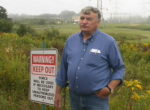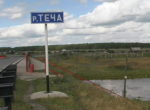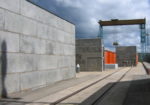 Informational videos for decommissioning of old nuclear power plants
Informational videos for decommissioning of old nuclear power plants
 Informational videos for decommissioning of old nuclear power plants
Informational videos for decommissioning of old nuclear power plants
 Hanhikivi. A documentary about a new Russian-Finnish nuclear power plant on the Gulf of Bothnia of the Baltic Sea. Showing the possible social, enviromental and economic impacts on Finland-Russia and the Baltic-Scandinavian region.
Hanhikivi. A documentary about a new Russian-Finnish nuclear power plant on the Gulf of Bothnia of the Baltic Sea. Showing the possible social, enviromental and economic impacts on Finland-Russia and the Baltic-Scandinavian region.
Production JSC Decommission, 2016
 The film tells about development of an anti-nuclear nongovernmental organization struggling for closure of one nuclear power plant (NPP) in Maine (USA). The Maine Yankee NPP was the first one decommissioned according to the «green field» principle. The characters of the film recall their fight for closure of the NPP which was difficult and joyful and the road they had chosen once made them steeled in battle.
The film tells about development of an anti-nuclear nongovernmental organization struggling for closure of one nuclear power plant (NPP) in Maine (USA). The Maine Yankee NPP was the first one decommissioned according to the «green field» principle. The characters of the film recall their fight for closure of the NPP which was difficult and joyful and the road they had chosen once made them steeled in battle.
Raymond Shadis, leader of NGO Friends of the Coast, with the support of his wife Patricia and a small group of friends through the unbelievable efforts and at the expense of hardship had managed to get together a group of activists who over the time of many years did their best to initiate decommissioning of the Maine Yankee plant.
 Today on the southern coast of the Baltic Sea near borders of three countries: Lithuania, Belarus and Russia, three projects of huge nuclear power plants are being implemented practically at the same time. The synchronicity of initiation and development of these projects gave an idea to observers to call them in combination the Baltic Nuclear Triangle This small territory faced a real fight for nuclear power production. Who needs these huge NPPS? And why are they being built? Experts, leaders of NGOs, politicians and residents of the region think, protest and act, trying to confront the monsters from nuclear power industry. Igor Shkradyuk, energy expert: In case of serious aggravation of the situation between these countries, NPPs within few kilometers from the border can become a threat to energy security and the overall security. An emergency at one of these three NPPs will lead to the inevitable pollution of the other states’ territories. How will these countries adjust their relations, while solving problems of consequences and responsibility for people’s health and lives?
Today on the southern coast of the Baltic Sea near borders of three countries: Lithuania, Belarus and Russia, three projects of huge nuclear power plants are being implemented practically at the same time. The synchronicity of initiation and development of these projects gave an idea to observers to call them in combination the Baltic Nuclear Triangle This small territory faced a real fight for nuclear power production. Who needs these huge NPPS? And why are they being built? Experts, leaders of NGOs, politicians and residents of the region think, protest and act, trying to confront the monsters from nuclear power industry. Igor Shkradyuk, energy expert: In case of serious aggravation of the situation between these countries, NPPs within few kilometers from the border can become a threat to energy security and the overall security. An emergency at one of these three NPPs will lead to the inevitable pollution of the other states’ territories. How will these countries adjust their relations, while solving problems of consequences and responsibility for people’s health and lives?
 Video-documentary about the motives of mass construction of nuclear power plants in the United States, from the perspective of participants in the decision-making, and the reasons for the phase-out of nuclear power plant construction.
Video-documentary about the motives of mass construction of nuclear power plants in the United States, from the perspective of participants in the decision-making, and the reasons for the phase-out of nuclear power plant construction. The documentary is about the environmental consequences of the Mayak plant in the Ural Region, Russia. The Mayak facility is a secret plant intended for weapon-grade plutonium production and spent nuclear fuel reprocessing. During the 60 years of its activity dozens of thousands square kilometers of the Russian territory was contaminated with the discharge of radioactive waste and became wasteland. As a result, hundred thousands people fell victim to the Mayak activity.
The documentary is about the environmental consequences of the Mayak plant in the Ural Region, Russia. The Mayak facility is a secret plant intended for weapon-grade plutonium production and spent nuclear fuel reprocessing. During the 60 years of its activity dozens of thousands square kilometers of the Russian territory was contaminated with the discharge of radioactive waste and became wasteland. As a result, hundred thousands people fell victim to the Mayak activity.
Thanks to many years’ efforts of Gosman Kabirov and Milya Kabirova (NGO “Techa”), Natalia Mironova (NGO «Movement for Nuclear Safety») and many other social activists, resettlement process was commenced in the radioactive village of Muslumovo on the Techa river in the Chelyabinsk Region .
Nevertheless, the spent nuclear fuel is being sent to Mayak. The discharge of radioactive waste continuously contaminates the environment. Nuclear energy consumers in the North-West Russia consider this industry clean and cheap and bear no social responsibility for safety of the region where spent nuclear fuel is transported.
 Last of the five power units of Greifswald NPP having VVER-440 reactors on the German coast of the Baltic Sea was shut down on 18 December 1990. Closure of the NPP was commenced after the publication of lethally negative report on the plant safety. Decommissioning of this NPP has become the world-largest project of this kind.
Last of the five power units of Greifswald NPP having VVER-440 reactors on the German coast of the Baltic Sea was shut down on 18 December 1990. Closure of the NPP was commenced after the publication of lethally negative report on the plant safety. Decommissioning of this NPP has become the world-largest project of this kind.
It took more than 10 years to shut down and dismantle the power units, to build an interim storage for spent nuclear fuel and radioactive waste. The estimated cost of the whole decommissioning project is €3.5 billion.
When making a political decision about the NPP closure the German government also took a responsibility for mitigating social consequences of the plant decommissioning. It provided the budget for social adaptation measures and established conditions for attracting investment into new industrial development. This breathed new life into the region. The regional public council carried out socio-ecological monitoring of the NPP decommissioning.
 Nuclear Power Plant (NPP) reactor decommissioning becomes an increasingly pressing problem of the world as more than 400 reactors approach their design lifetime limit 30-40 years of operation. The film tells about NPP decommissioning in Sweden, Germany and Lithuania; about problems, which municipal authorities and communities have to face in the towns with economy oriented on nuclear technologies.
Nuclear Power Plant (NPP) reactor decommissioning becomes an increasingly pressing problem of the world as more than 400 reactors approach their design lifetime limit 30-40 years of operation. The film tells about NPP decommissioning in Sweden, Germany and Lithuania; about problems, which municipal authorities and communities have to face in the towns with economy oriented on nuclear technologies.
In more detail the film shows the life of Lithuanian nuclear town Visaginas, next to which Ignalina NPP having 2 RBMK-1500 (Chernobyl type) reactors is prepared for decommissioning in 2009. Thanks to the efficient interaction of authorities, business and public of Lithuania the crisis situation of reactor shutdown was transformed into the creative process of opening up new perspectives for the 33 000 people living in the municipality.